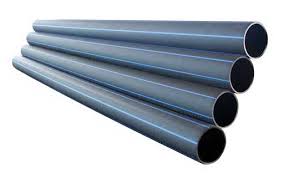Nov . 28, 2024 08:42 Back to list
Cold Water Solutions Using PPR Pipes for Efficient Plumbing Systems
Understanding PPR Pipe for Cold Water Applications
In the realm of plumbing and infrastructure, selecting the right materials is crucial for ensuring durability, efficiency, and safety. One material that has gained significant popularity for cold water applications is Polypropylene Random Copolymer (PPR) pipe. This article will explore the characteristics, benefits, applications, and installation practices associated with PPR pipes for cold water systems.
What is PPR Pipe?
PPR pipe is made from a thermoplastic polymer known as polypropylene. This specific form, polypropylene random copolymer, boasts superior chemical resistance and excellent thermal stability. PPR pipes are available in various diameters and lengths, making them versatile for a broad range of cold water distribution systems.
Key Characteristics of PPR Pipe
1. Durability PPR pipes are renowned for their longevity. They resist corrosion, scaling, and biological growth, which are common issues with traditional materials like metal and PVC pipes.
2. Temperature Resistance Although primarily used for cold water systems, PPR pipes can tolerate a wide temperature range. This characteristic makes them suitable for a variety of applications, including cold and warm water systems.
3. Low Thermal Conductivity PPR exhibits low thermal conductivity, which helps in reducing heat loss when transporting warm fluids. This property is beneficial when the pipe is used in conjunction with hot water systems, ensuring efficient energy use.
4. Lightweight The lightweight nature of PPR pipes simplifies handling and installation, reducing labor costs significantly.
5. Flexibility PPR pipes can be easily bent and molded during installation, allowing for customized configurations in tight spaces without the need for additional fittings.
Advantages of PPR Pipe for Cold Water Applications
1. Cost-Effectiveness Although the initial investment might be slightly higher than traditional materials, the long-term savings associated with PPR pipes are substantial. Their resistance to corrosion and minimal maintenance needs result in fewer replacements and repairs.
2. Health and Safety PPR pipes are free of harmful chemicals like lead and cadmium that may leach into drinking water from metal pipes. Their non-toxic nature makes them a safe choice for potable water systems.
ppr pipe for cold water products

3. Ease of Installation The installation process for PPR pipes includes welding, which creates a strong and seamless joint. This method eliminates the risk of leaks that can occur with threaded fittings used in other piping systems.
4. Environmental Impact PPR pipes are recyclable and have a lower environmental footprint compared to traditional alternatives. Their longevity also means less waste generated over time.
Applications of PPR Pipe
PPR pipes are primarily employed in residential, commercial, and industrial environments for cold water supply systems. Some common applications include
- Residential Plumbing PPR pipes are increasingly used in homes for cold water supply lines, offering a reliable and economical solution for homeowners.
- Commercial Buildings Due to their versatility, PPR pipes are favored in office complexes, schools, and hospitals for efficient cold water distribution.
- Agricultural Use Farmers often utilize PPR pipes for irrigation systems, benefiting from their durability and resistance to various chemicals found in fertilizers.
- Industrial Processes For industries that require water transport in processes such as manufacturing and chemical production, PPR pipes offer a non-reactive and robust solution.
Installation Practices
Proper installation is key to maximizing the benefits of PPR pipes. It is essential to ensure that pipes are cut cleanly and joined using the appropriate welding techniques. Adequate support should be provided to prevent sagging, and expansion loops may need to be employed in long runs to account for temperature changes.
Conclusion
PPR pipes represent a modern and efficient solution for cold water distribution systems. Their durability, safety, and cost-effectiveness make them an ideal choice for a variety of applications. As more homeowners and businesses become aware of the advantages of this innovative technology, PPR pipes will likely continue to gain ground in the plumbing industry. When considering plumbing materials, PPR should be a top contender for those seeking lasting performance and reliability in cold water applications.
-
High-Quality PVC Borehole Pipes Durable & Versatile Pipe Solutions
NewsJul.08,2025
-
High-Quality PVC Perforated Pipes for Efficient Drainage Leading Manufacturers & Factories
NewsJul.08,2025
-
High-Quality PVC Borehole Pipes Durable Pipe Solutions by Leading Manufacturer
NewsJul.08,2025
-
High-Quality PVC Borehole Pipes Reliable PVC Pipe Manufacturer Solutions
NewsJul.07,2025
-
High-Quality UPVC Drain Pipes Durable HDPE & Drain Pipe Solutions
NewsJul.07,2025
-
High-Quality Conduit Pipes & HDPE Conduit Fittings Manufacturer Reliable Factory Supply
NewsJul.06,2025

